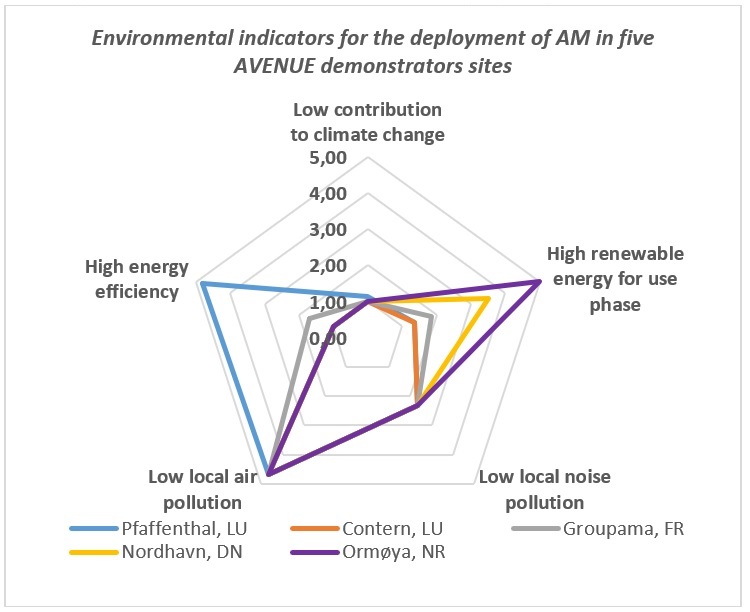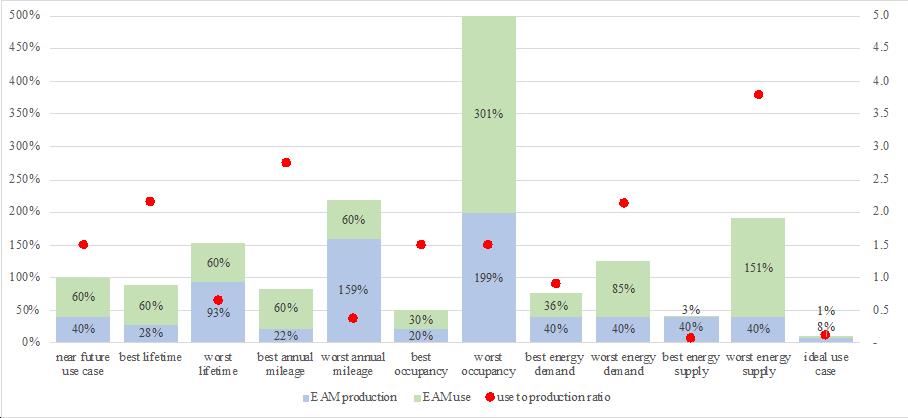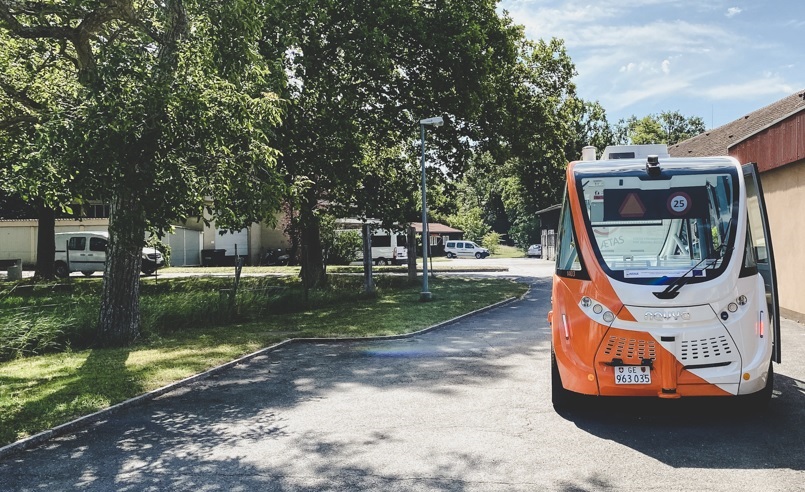One of the AVENUE project’s main objectives was to determine if the Automated Minibus (AM) introduction could improve the environmental situation and help meet the EU climate target plan 2030 goals (55% less GHG emissions at this date). Our team’s research and calculations, based mainly on primary data collection from the AVENUE deployment sites, allowed us to positively answer this question and provided new insights and findings regarding the AM’s environmental impact.
The AVENUE team research included:
- A Life cycle inventory that includes all environmentally impacting material and energy flows (impacting environmental performances) that enter or leave the system and the potential energy savings analyze. Based on that, an AM environmental Life Cycle Assessment (LCA) considering the whole cycle from raw material extraction to recycling.
- The establishment of a set of indicators measuring the AM’s climate impact including those of energy efficiency, renewable energy use, air/noise pollution and climate change.
- A monitoring of the energy efficiency and some climate change indicators ratings for each demonstrator site.
- A sensitivity analysis where we varied one at a time the parameters that might influence the AM overall environmental impact to see the corresponding environmental repercussions.
- The development of scenarios, including each current demonstrators’ situation, others near future ones and an ideal case scenario with the parameters setting that performed best in the sensitivity analysis.
- An estimation and analysis of the externalities to provide a framework to assess the environmental cost of deploying AMs on a macro scale.
- The LCA, the external costs and the environmental indicators allow a global environmental impact assessment.
- A prediction of the near future transport modal shifts and their implications, but also of the shifts induced by the AM advent itself to help understand the context in which AMs will operate and how they will be used (to assess their future prevalence/environmental impacts).
- An estimation of the potential environmental impact of the physical and digital infrastructures.
- The development of a generic AM model based on the literature and refined with primary data from the AM manufacturer and from our demonstrators.
These research led us to various conclusions supporting the positive environmental impacts of a large scale deployment of the AM model
Low impact of the equipment required for the vehicles automation
The production of components required for automation and their total energy use do not significantly affect the overall environmental impact.
Lower externalities
The Automated Minibuses externalities estimations demonstrate positive results for introducing them particularly when replacing some individual forms of mobility.
Energy savings
Automated Minibuses (AMs) have high energy saving potentials: the consumption increases linked to the vehicle automatization’s required equipment functioning (and its weight and drag) is way lower than the energy saved through eco route planning, traffic light assistant, predictive adaptive cruise control or eco-driving, thermal management and hybrid&fuel cell control, connectivity, fleet operations optimization, etc.
The AM service global energy consumption performance (and related environmental impact) depends on its integration within the PT, as well as how widely it will be deployed.
High energy efficiency and reduction in local air pollution
Our environmental indicators reveal that the energy efficiency and the reduction in local air pollution (no direct GHG emissions) are Automated Minibus services’ strong points.
Promising climate impact results within our demonstrators
Despite the pilot testing’s particular circumstances, our demonstrators Automated Mininbuses’ climate impacts are lower than diesel buses and individual ICEVs ones and according to our use cases Autonomous Minibuses will soon have less impact than all other transport means at off-peak and all individual vehicles on average.
Our Lyon and Luxembourg demonstrators present an excellent climate change indicator rating as a result of a high mileage and average occupancy. This high average occupancy also guarantees a good energy efficiency score to these sites. Copenhagen and Oslo have the best score for the renewable energy indicator among our sites.

AM impact on the mobility demand and trip distribution
The Automated Minibus (AM) advent will have an important effect on the mobility demand and the trip distribution.
AMs are expected to improve and strengthen public transport, hence bring environmental benefits by reinforcing shared, multi and intermodal mobility as well.
How to even improve the AM environmental performances?
Decreasing the most polluting phases impact
An Automated Minibuses (AM) life cycle climate effects analysis has shown that the production of the components and the driving itself are by far the most environmentally intensive phases of the AM life cycle. The component production/manufacturing dominate our demonstrators’ climate impacts but the use phase will soon be the first impact contributor.

Reducing the most environmentally impacting parameters
The sensitivity and scenario analyses show that the parameters that influence the Autonomous Minibuses environmental impact the most are the electricity mix used, the AM lifetime/mileage and average occupancy, followed by the battery production mode type and the use phase energy efficiency.
Our research also shows that an AM with an ideal mileage and occupancy rate is environmentally better than any other transport modes.
All our research and results are available in our public deliverables section (D8.1 , D8.2 and D8.5 for the environmental aspect)



